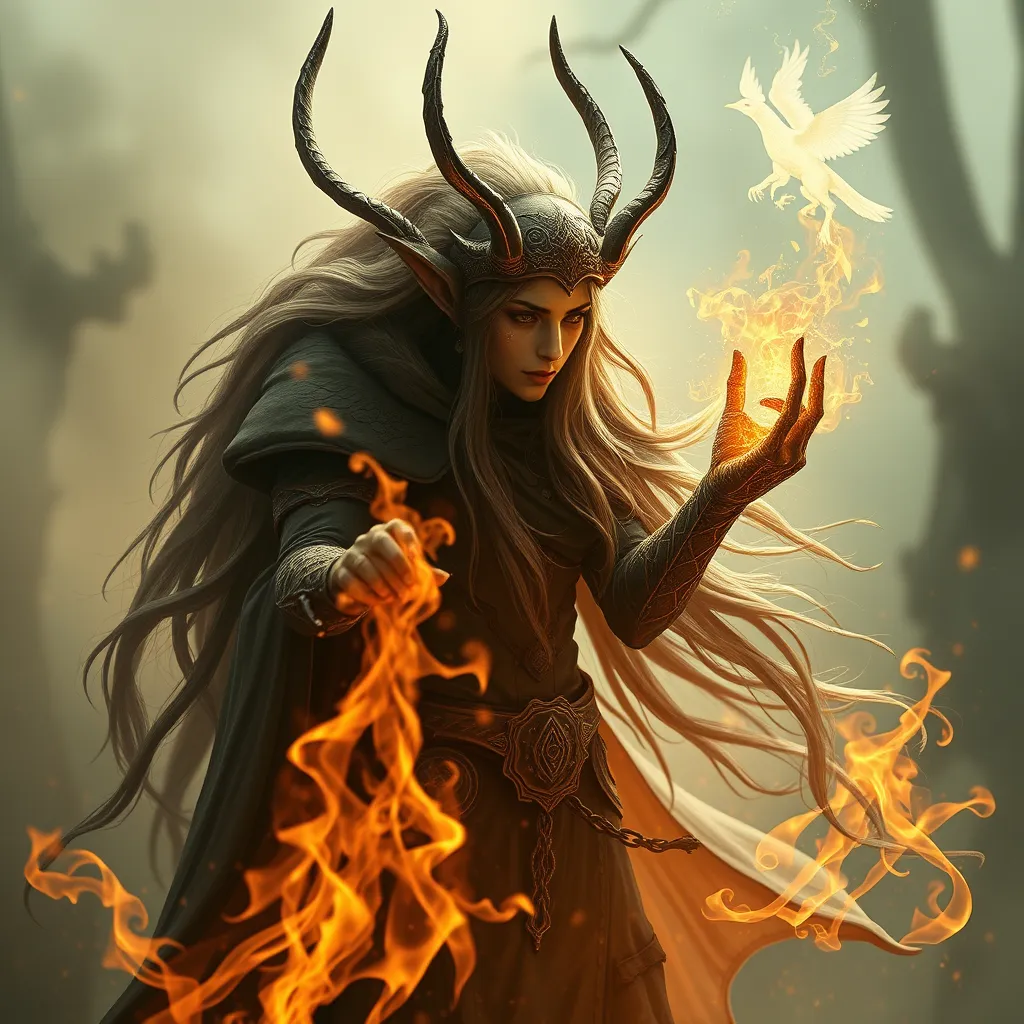The Roman Chimera and its Influence on Later Art and Literature
I. Introduction
The Roman Chimera, a mythical creature that embodies a blend of various animals, has captivated the imagination of artists and writers throughout history. Defined as a fire-breathing monster typically depicted with the body of a lion, the head of a goat protruding from its back, and a serpent for a tail, the Chimera is significant not only for its fearsome appearance but also for the themes it represents. This article explores the influence of the Chimera in art and literature, tracing its origins, physical characteristics, and the legacy it has left behind across different historical periods.
II. Origins of the Chimera Myth
A. Historical context in Greek mythology
The Chimera originates from Greek mythology, where it is described as a monstrous offspring of Typhon and Echidna. Known for its ferocity and the ability to breathe fire, the Chimera was ultimately slain by the hero Bellerophon, who rode the winged horse Pegasus. This myth not only highlights the Chimera’s terrifying nature but also serves as a narrative of heroism and the triumph of good over evil.
B. The Chimera’s representation in Roman culture
As the Romans adopted and adapted Greek myths, the Chimera retained its fearsome qualities but also took on new meanings. In Roman culture, the Chimera symbolized chaos and the struggle against overwhelming odds. Roman writers and artists incorporated the Chimera into their works, reinforcing its status as a creature of both horror and fascination.
III. Physical Characteristics and Symbolism
A. Description of the Chimera’s anatomy
The Chimera is often depicted as a hybrid creature, combining anatomical features of three different animals:
- Lion: The body of the Chimera is typically that of a lion, symbolizing strength and nobility.
- Goat: The head of the goat represents untamed nature and stubbornness, adding to the creature’s ferocity.
- Serpent: The tail, often depicted as a snake, introduces an element of danger and treachery.
B. Symbolic meanings associated with the Chimera
The Chimera embodies various symbolic meanings, including:
- Duality: The blending of multiple beings signifies the coexistence of opposites.
- Chaos vs. Order: The Chimera represents chaos, standing in contrast to the heroic figures that confront it.
- Fear and Power: As a creature of nightmares, the Chimera evokes fear, yet it also symbolizes the power of imagination.
IV. The Chimera in Roman Art
A. Notable sculptures and mosaics featuring the Chimera
The Roman era saw the creation of numerous artworks depicting the Chimera. One of the most notable examples is the Chimera of Arezzo, a bronze sculpture dating back to the 4th century BCE. This masterpiece showcases the creature in a dynamic pose, emphasizing its ferocity and power. Additionally, various mosaics from Roman villas often include the Chimera among other mythological motifs, illustrating its popularity in decorative arts.
B. Techniques and styles used in Roman depictions
Roman artists employed various techniques to depict the Chimera, including:
- Realism: Sculptors aimed for lifelike representations, capturing the textures of fur and scales.
- Dynamic Composition: Many artworks depict the Chimera in action, emphasizing movement and energy.
- Symbolic Coloration: Colors were often chosen to evoke specific emotions associated with the Chimera’s nature.
V. The Chimera’s Influence on Medieval Art
A. Transition of the Chimera motif in the Middle Ages
During the Middle Ages, the depiction of the Chimera evolved, often blending with Christian symbolism. The creature began to be associated with the concept of sin and the chaos of the unholy. Artists of the time incorporated the Chimera into various religious texts and artworks, representing the struggle between good and evil.
B. Examples of Chimera representations in medieval manuscripts
Medieval manuscripts frequently featured the Chimera, often as a symbol of heresy or temptation. Illuminated manuscripts, such as The Book of Hours, depicted the Chimera alongside saints and other mythical creatures, illustrating the moral lessons of the time.
VI. The Chimera in Renaissance Literature and Art
A. Reinterpretation of the Chimera in Renaissance works
The Renaissance marked a resurgence of interest in classical mythology, including the Chimera. Artists and writers reinterpreted the creature, exploring themes of beauty, terror, and the sublime. The Chimera became a symbol of the human condition, embodying both aspiration and fear.
B. Key artists and writers inspired by the Chimera
Several prominent figures of the Renaissance were inspired by the Chimera, including:
- Pablo Picasso: His works often reflect the fusion of different forms, akin to the Chimera’s hybrid nature.
- Dante Alighieri: In The Divine Comedy, the Chimera serves as a metaphor for the chaos of sin.
- Benvenuto Cellini: The sculptor’s works often evoke the power and terror associated with mythological creatures like the Chimera.
VII. The Chimera’s Legacy in Modern Art and Literature
A. Contemporary interpretations and adaptations
In modern times, the Chimera continues to inspire artists and writers, often symbolizing the complexities of identity and existence. Contemporary interpretations frequently explore themes of transformation and the merging of different cultures and ideas.
B. The Chimera in popular culture and media
The Chimera has made its way into various forms of popular culture, including:
- Film: Movies often depict the Chimera as a fearsome antagonist, showcasing its mythical attributes.
- Literature: The Chimera appears in fantasy novels, representing the conflict between humanity and monstrous forces.
- Video Games: Many games feature Chimera-like creatures, often as bosses or pivotal characters.
VIII. Conclusion
The Roman Chimera has left an indelible mark on art and literature across the ages. Its enduring influence can be seen in various artistic expressions, from ancient sculptures to modern literature. The Chimera serves as a reminder of the power of mythology and its capacity to inspire creativity and reflection on the human experience. As we continue to explore mythical creatures in art and literature, the Chimera stands out as a symbol of complexity, chaos, and the eternal struggle between opposing forces.

![MF #50: The Chimera [Greek Mythology]](https://i.ytimg.com/vi/_ZgY4x5i3l4/hqdefault.jpg)


